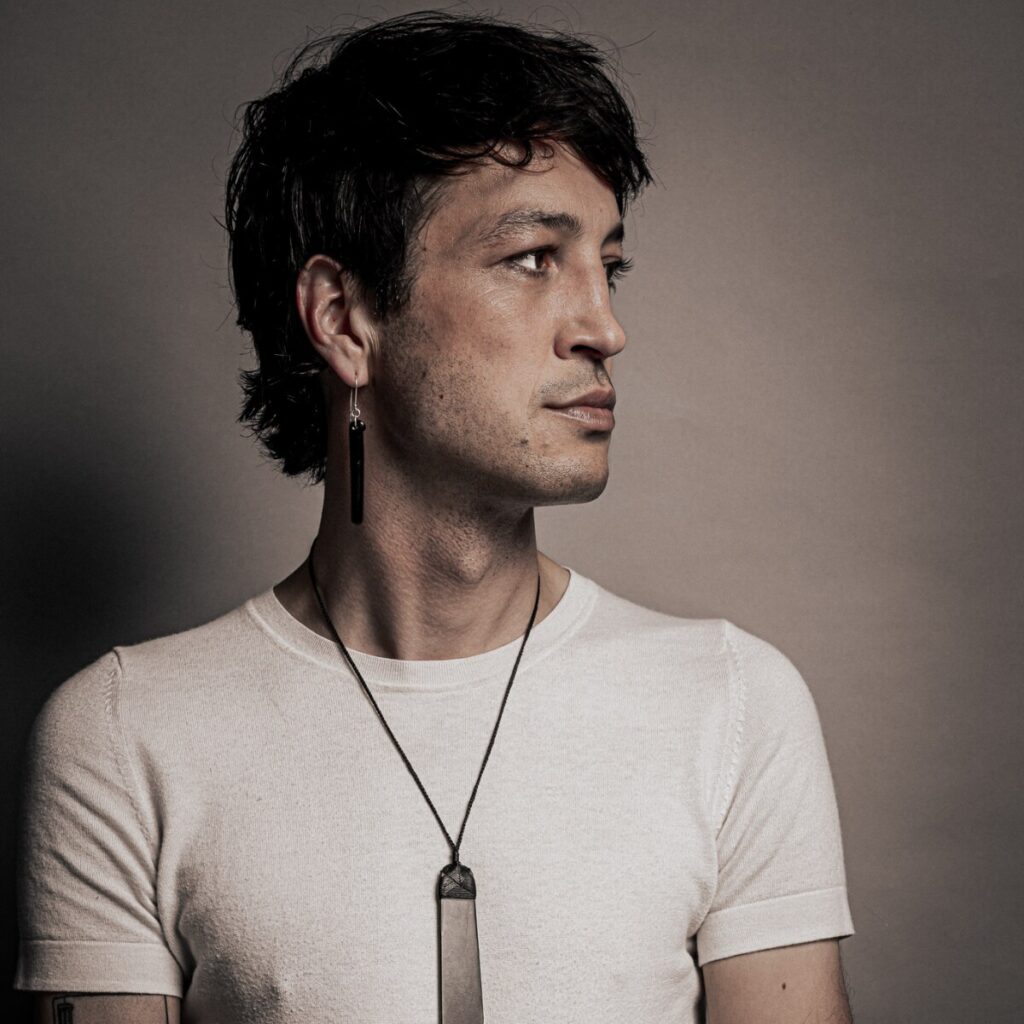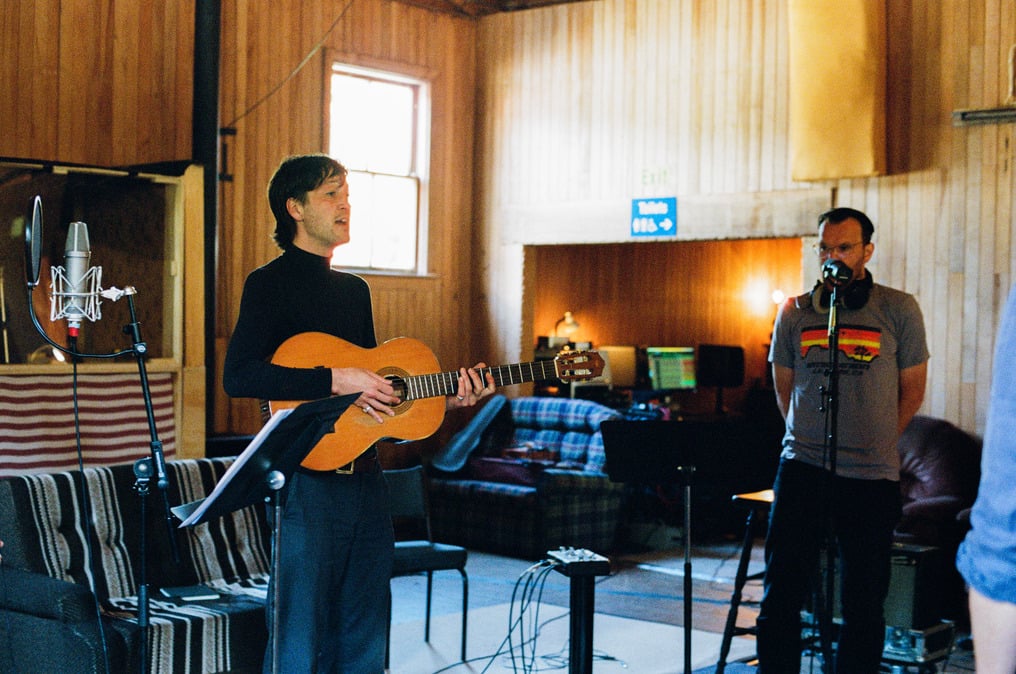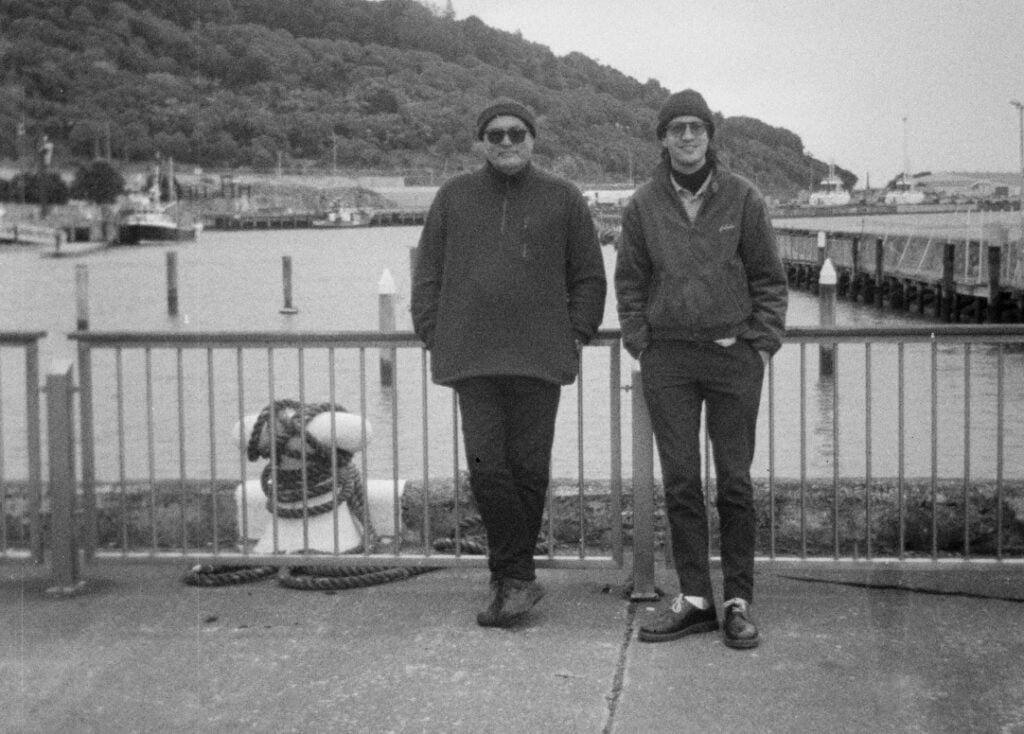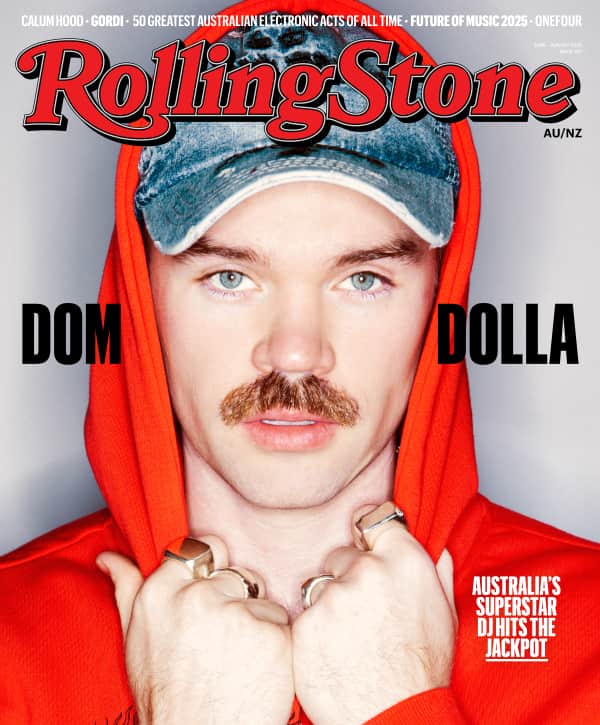Ian Laidlaw
Marlon Williams, As You’ve Never Heard Him Before
This April, Marlon Williams released his most personal album to date, written and recorded entirely in te reo Māori. To mark the special record, he decided to invite his fans into its creation in the most intimate way.
Marlon Williams didn’t have much reason to use social media last year. His third solo album, My Boy, was two years behind him, and there were precious few tour dates to promote. As the end of 2024 approached, though, he felt compelled to make two posts on a matter of deep concern to all New Zealanders: the Treaty Principles Bill.
A machination of the right-wing ACT Party, the controversial proposal threatens to severely alter the way the Treaty of Waitangi, New Zealand’s founding document, is interpreted, and in turn undermine Māori rights in this country. On the eve of the submissions deadline for feedback on the bill, Williams, who is of Ngāi Tahu and Ngāi Tai descent, faced the importance of the moment with music.
He posted a cover — just him and his acoustic guitar — of Hirini Melbourne, the beloved Māori musician, “the softest of spirits with the firmest resolve.” The post drew particular attention to the following lyrics:
Aio ana mai
Te marino i te rangi e
Kia rere noa au i te raukura
o Rongomai
Love Music?
Get your daily dose of everything happening in Australian/New Zealand music and globally.
Huri mata ao
Ki te hono i te rongo
A rough translation reaps beauty: “Be tranquil/The calm in the skies/May I float like a feather of Rongomai/The face of the world turns/To connect unto peacefulness.”
Simple, graceful, compassionate. In April, Williams will follow in the path of his idol Melbourne by releasing Te Whare Tīwekaweka, his first album of original waiata written and performed entirely in te reo Māori, and those three tenets are at the heart of the special record.
First conceived five years ago when Williams experienced writer’s block around the time he was recording My Boy, when he “needed some sort of new world to enter into to get the wheels greased,” Te Whare Tīwekaweka has really been in the stars since Williams’ very beginning; how else can one interpret the fact that the album’s cover art — which depicts a stick-thin man walking towards a ghostly house, his top hat almost as lengthy as his body, the figure closely resembling Williams himself — was actually sketched by his mum, the visual artist Jennifer Rendall, when she was pregnant with the future artist?
Even if this album was indeed preordained, Williams didn’t rush towards his destiny.
Just turned 34, he grew up singing Māori in his hometown of Lyttelton, “which is kind of how I found my chops as a singer in some ways… it feels like it’s just been sitting there since I was a kid really.” Although he was schooled for a time in kōhanga reo, he never became fluent in the language. “We spoke a little bit around the home but not enough to keep it going until this present day, so it’s been a real process of learning,” he told RNZ in 2020. It was during the early pandemic years that Williams, the perennially touring artist, was finally afforded the necessary time to reconnect with his Māoritanga, getting back in touch with te reo through creating music.
Williams was careful to not make it an insular experience, however. After they missed out on recording My Boy due to COVID restrictions, Williams’ close-knit band, The Yarra Benders (Ben Woolley, Gus Agars, and Dave Khan), returned for Te Whare Tīwekaweka. Mark Perkins (Te Whānau-ā-Apanui) co-produced the album, and the He Waka Kōtuia singers enhanced waiata with their beautiful vocals. Most significantly, KOMMI (Kāi Tahu, Te-Āti-Awa), a Lyttelton-based rapper, writer, and poet, diligently checked over Williams’ lyrics for “grammar and any basic errors.” (“I am extremely grateful to them for their patience, kindness, knowledge, openness, sense of humour, generosity and general creative nous,” Williams said of KOMMI in a press release.)
“I really wanted to synchronise to bring Māori in the band, but I wanted the intention to be non-Māori to come into the world too,” Williams says. “I felt like that was an important part of it. I really wanted to write it as a Marlon Williams project and not as something out of fear of making a misstep, completely removing myself from the process somehow.”
Williams and his team recorded Te Whare Tiwekaweka “right at the bottom of the South Island, and such isolation was what Williams craved. “It meant the world to be able to — ‘cause you know I was bringing some Australians in, and some [people] from the north — bring them to a breathtaking place. For this album it made sense to be in the middle of nowhere.”
Timing is everything in music, and how could Williams and his collaborators have foreseen, as they surrounded themselves in quiet nature at the bottom of Aotearoa, that the album they were creating would be released at perhaps the most turbulent political time in this country in the 21st century.
“I have mixed feelings about putting it out ‘cause as much as all art is political, it’s not really a political album,” Williams reflects. “But I do like the simple fact that there will be more [te] reo Māori out in the world. Obviously politically-driven music is beautiful and has its own place. It’s a part of the reason things survived, but I think hopefully it’s a subtle nod that there’s a bit more freedom and room culturally to be able to express nuance and really genuine and general life stuff,” he continues.
As if feeling the weight of his project for the first time, Williams intentionally sets himself adrift in the album’s lead single. “Aua Atu Rā”, also the oldest waiata on the album, was co-written by Williams and KOMMI, and is a considerate response to a famous Māori proverb: “he waka eke noa,” which means “we’re all in this boat together.” But Williams, at least for the length of “Aua Atu Rā”, disagrees with this call for communal solidarity. Underneath a Trojan Horse-esque breezy groove inspired by Sixties Māori showbands, he sings, “I am alone / In this boat / On the ocean / There is not a trace of wind / No, none at all.”
“We are all in the same boat… and yet are at once utterly alone,” Williams wrote in a press statement about “Aua Atu Rā”, shedding light on the thinking behind his proverb rebuttal.
In the accompanying music video, Williams lies supine on a therapist’s couch, his eyes tightly shut; he’s magically transported to a barge in the middle of water, the plush office couch replaced by a relaxing sunlounger. No man is an island, John Donne wrote, but Williams’ subconscious, it seems, is tempted to believe the opposite.
The expression of individuality within the lyrics and visuals of “Aua Atu Rā” is stark, but Williams’ self-imposed isolation doesn’t last long.
As on his previous albums, waiata aroha — love songs — still abound. There’s a vibrant playfulness to the waiata (Williams keenly brings this up several times in conversation), something that he says is “inherent and unavoidable” with Māori music.
It helped that Williams wrote much of the album in “very simple Māori” so as not to overcomplicate matters. “My way of justifying it to myself is that some of my favourite songs are just a simple ‘ooh baby baby.’” This helped him transition from his usual style of writing in English. “I think I’m not an overly conceptual writer in English, I often write hypothetically anyway and in a lot of ways it was a lateral move. In that sense it wasn’t too much heavy lifting of, ‘Okay, how do I express myself in Māori?’ I just let the sound and certain keys and themes emerge.”
This is Hirini Melbourne’s influence showing itself again. “He inspires me for a lot of reasons,” Williams says, smiling. “He was a self-taught guitar player and he started writing his own songs with his main concern being, ‘How do we keep the language alive.’ He knew that the mouths of children are going to be the ones that really matter in terms of keeping the knots in the rope. By writing these beautiful songs about spiders and all the native birds, in these two-minute songs, he was able to encapsulate both a full conception of Māori relationship with land and also connect directly to the hearts of children. He wrote about the most simple things and if you can’t say it in four lines, then just forget about it.”
Long before he found an affinity for Melbourne’s music, Williams was greatly influenced by his dad, who impressed upon the young boy that “melody is king and words are powerless in accordance to meaning when you get the melodies right.” And Williams senior certainly knew what he was talking about: he used to be in a punk band back in his heyday. “They were certainly the only Māori punk band in Gisborne,” Williams laughs. He managed to see his dad play live once. “It was a very formative experience watching someone who looks like me on the stage.”
Williams is visibly moved when we discuss his parents listening to his first te reo Māori album. “Dad’s just such a big part of my musical world. And obviously the album cover is a drawing of my mother’s that she did before I was born, but it looks like me.”
Even if he didn’t know it at the time, Williams’ previous album was a spiritual and sonic precursor to Te Whare Tīwekaweka. The title track from My Boy, self-described as a “Māori disco bop,” was set to guitar played in Māori strum style, also known as jingajik.
My Boy was also, at its essence, a New Zealand album, in a similar way that Lorde’s maligned Solar Power album was also a loving ode to a quiet country of endless beaches, long summers, and all-encompassing nature. “A lot of my record is about finding yourself back home where things are easygoing and there’s a beach within 100 miles of any spot,” as he told The Guardian about My Boy in a 2022 interview.
Lorde, of course, notably released her own te reo Māori album, Te Ao Mārama, in 2021, a companion record to Solar Power which featured several contributions from Williams. Returning the favour, Lorde features on “Kāhore He Manu E”, a sweet, short waiata on Williams’ new album.
“She knew that there would be some controversy ‘round it — some kickback from it — but in spite of that she leaned in wholeheartedly and really engaged in the translation for both songs,” Williams says of Lorde’s te reo Māori record. “I just have a lot of admiration for her to make that in spite of whatever the backlash was going to be.”
The debate around Lorde’s album at the time roughly settled into two opposing viewpoints: that Lorde, a non-Maori, had some sort of white saviour complex, and that she was using her significant platform to spotlight te reo Maori to the world. (“I welcome this discourse. Power like mine should be interrogated,” Lorde said at a Variety Power of Women event in Los Angeles in 2021.) Looking back now, Williams falls into the latter camp. “[…] people will be like, ‘Why is a white girl the one bringing Maori to the world?’ Well, we have exactly one popstar in NZ that is of that status, so the reality is there is only one person who has that reach to do that. But I feel quite funny about the gatekeeping of language in the general sense.”
He lights up as he recalls the pair proudly performing in te reo Māori together at London’s Alexandra Palace in 2022. “Yeah, it was incredible,” he says of the experience.
Later in 2025, Williams will tour Te Whare Tīwekaweka (which translates to “A Messy House”). Befitting the album they’re tied to, expect these forthcoming shows to be playful. “I mean, you can’t have a show about Māori music without being playful… I just want it to be an overtly human experience with all the highs and lows. But I definitely want to make a show to match the rooms… there’ll be elements of kapa haka and I’ll be getting some collaborators that have been important to the album involved in the show too.”
This is Marlon Williams as you’ve never heard him before, and Marlon Williams as you’ve never seen him before too. A documentary, charting the making of his first te reo Māori album, bringing into sharper focus the man behind the music, will follow later in the year.
For the musician-turned-actor (Williams has played short but memorable roles in films like A Star Is Born and True History of the Kelly Gang; like Elvis, whom Williams has often been compared to in the past, his striking, angelic features are made for the silver screen), a doc is perhaps not the most surprising artistic move, but Williams is still keen to assure me that he’s “not the kind of person that goes, ‘I want to make a documentary about myself.’”
His collaborator, Mark Perkins, introduced him to the director, Ursula Grace, and Williams soon felt comfortable about her ambition for the project. “I met her at a restaurant with him [Mark] and mentioned I was getting into this Māori record and her ears pricked. She set up a meeting and laid a pitch to me. I think she was more interested in the personal journey rather than the political side — the personal side of someone who has become worldly and trying to establish something new.”
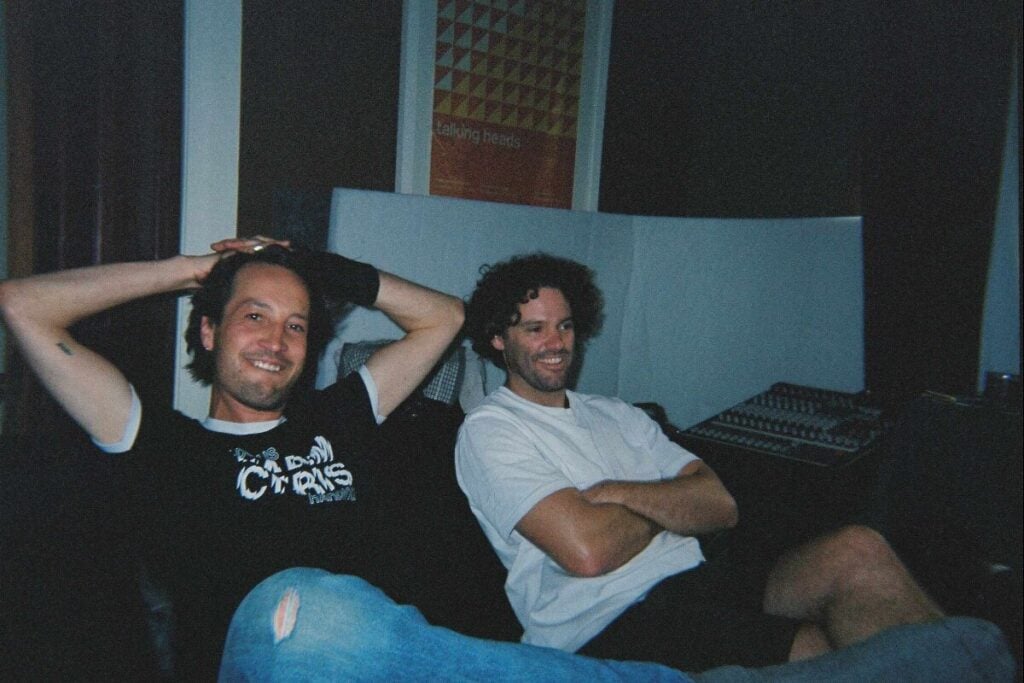
Image: Marlon recording at Te Ra Studios Credit: Supplied
From the outset, Williams offered a lot of himself to the documentary. “She [Ursula] was there from the start of the writing until like two months ago. And it was arranged to follow me to my marae (meeting grounds) on the east coast all the way to London, Berlin to LA, Melbourne. A lot of time spent, a lot of miles covered.”
A cinematic release is already confirmed for the film. “We are hoping it will get a few looks and some festivals — so we are just in that process at the moment.”
Williams has felt alone a lot during his career. “I’ve definitely not put my health first,” he gravely admits in the documentary trailer, revealing that “there have been times… I’ve got literally nothing” to give before going on-stage. “I’ve got to work out a way to put myself first,” he says. “It’s time to calm down.”
For the local boy who’s been touring the world since he was in high school, the answer to finding inner peace lay at home.
Williams visited his marae for the documentary, where, in a touching full circle moment for the former choir singer, the local school sang the pōwhiri (Māori welcoming ceremony) to welcome him. “[…] it was a perfect experience to be privileged to show on the documentary,” he reflects with pride.
In a key scene, Williams tells his tangata whenua (people of the land) about his plan to record an album entirely in te reo Māori for the first time. This lithe performer, a man who’s performed on famous stages around the world, looks suddenly nervous, his hands clasped tightly in front of his body. “It was my first [time] being welcomed onto my marae — so there was a lot going on there. It was an incredible experience, they were incredibly welcoming.”
Williams may have felt adrift at the beginning of this monumental undertaking, but by its end, he’s achieved something beautiful: greater connection with his tīpuna (ancestors) and whenua (home). The press release for Te Whare Tīwekaweka ends with another Māori proverb, this one also advocating for communality: “ka ora pea i a koe, ka ora koe i au” / “perhaps my wellbeing lies with you, and yours with me.” Williams’ personal journey, his homecoming odyssey, has led to a satisfying universal conclusion.
Marlon Williams’ Te Whare Tīwekaweka is out now.
This Marlon Williams interview features in the March-May 2025 issue of Rolling Stone AU/NZ. If you’re eager to get your hands on it, then now is the time to sign up for a subscription.
Whether you’re a fan of music, you’re a supporter of the local music scene, or you enjoy the thrill of print and long form journalism, then Rolling Stone AU/NZ is exactly what you need. Click the link below for more information regarding a magazine subscription.



























